Yihua Yang
Taxonomy and evolution predicting using deep learning in images
Jun 28, 2022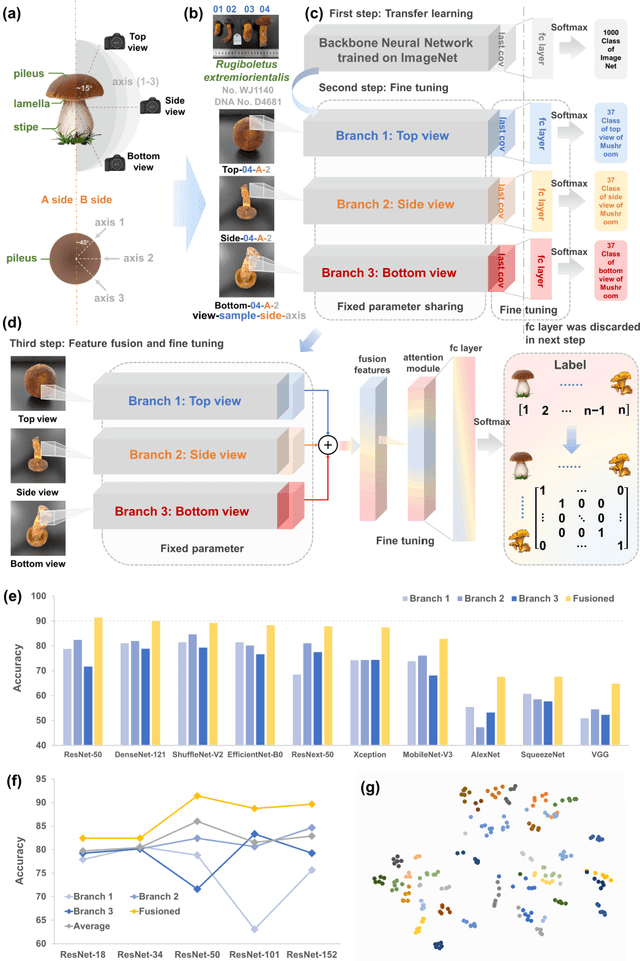
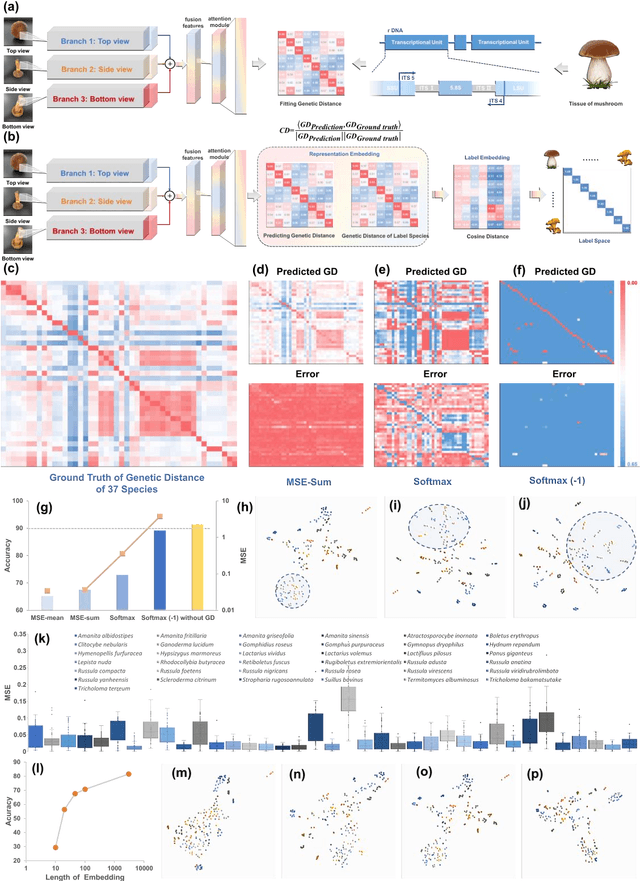
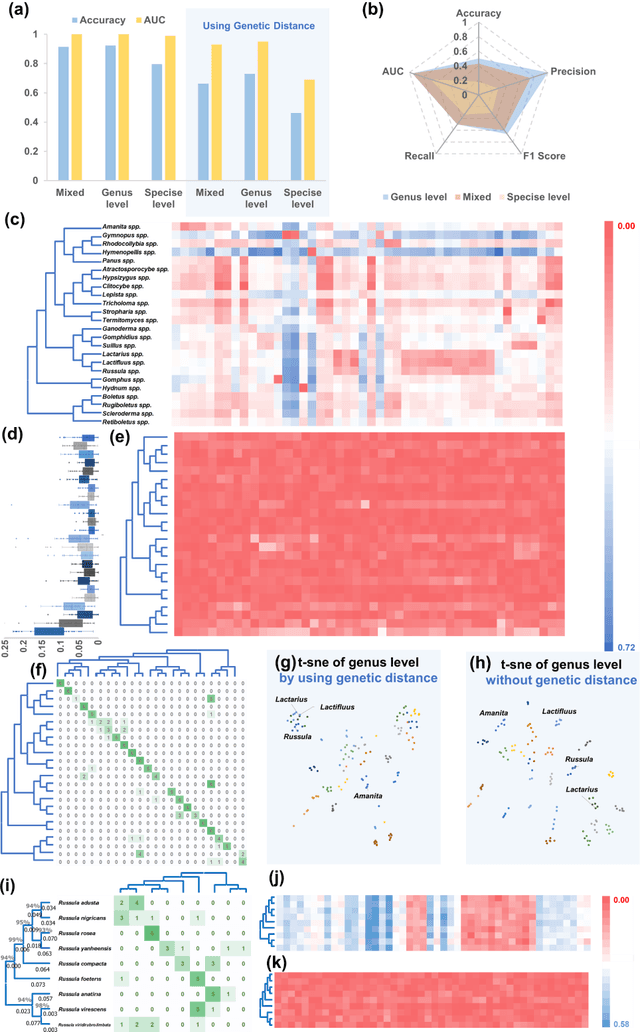
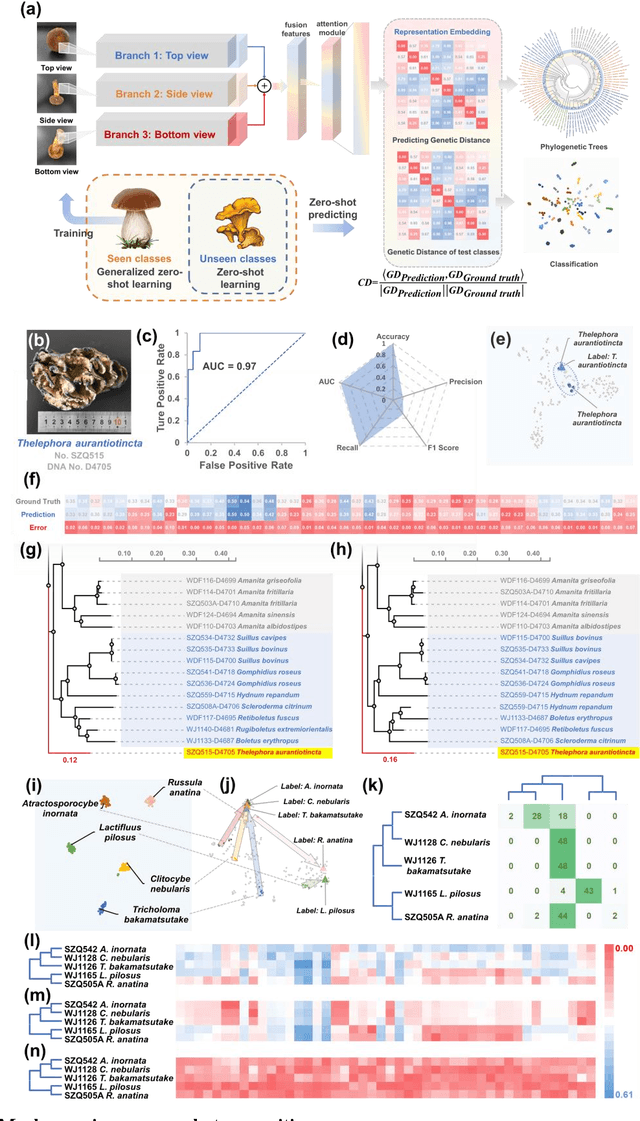
Abstract:Molecular and morphological characters, as important parts of biological taxonomy, are contradictory but need to be integrated. Organism's image recognition and bioinformatics are emerging and hot problems nowadays but with a gap between them. In this work, a multi-branching recognition framework mediated by genetic information bridges this barrier, which establishes the link between macro-morphology and micro-molecular information of mushrooms. The novel multi-perspective structure is proposed to fuse the feature images from three branching models, which significantly improves the accuracy of recognition by about 10% and up to more than 90%. Further, genetic information is implemented to the mushroom image recognition task by using genetic distance embeddings as the representation space for predicting image distance and species identification. Semantic overfitting of traditional classification tasks and the granularity of fine-grained image recognition are also discussed in depth for the first time. The generalizability of the model was investigated in fine-grained scenarios using zero-shot learning tasks, which could predict the taxonomic and evolutionary information of unseen samples. We presented the first method to map images to DNA, namely used an encoder mapping image to genetic distances, and then decoded DNA through a pre-trained decoder, where the total test accuracy on 37 species for DNA prediction is 87.45%. This study creates a novel recognition framework by systematically studying the mushroom image recognition problem, bridging the gap between macroscopic biological information and microscopic molecular information, which will provide a new reference for intelligent biometrics in the future.
Mushroom image recognition and distance generation based on attention-mechanism model and genetic information
Jun 27, 2022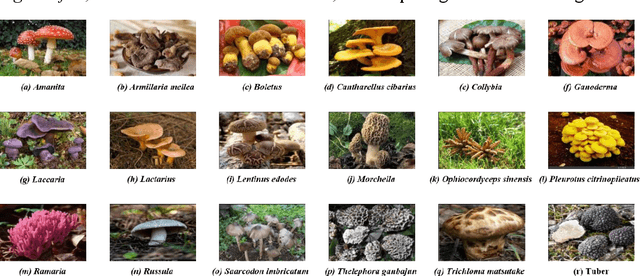
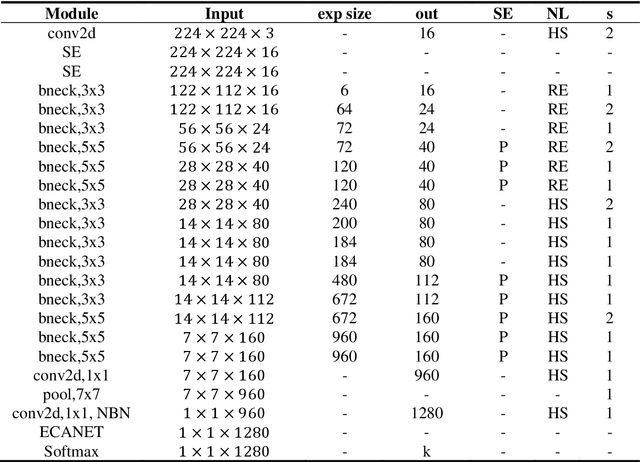
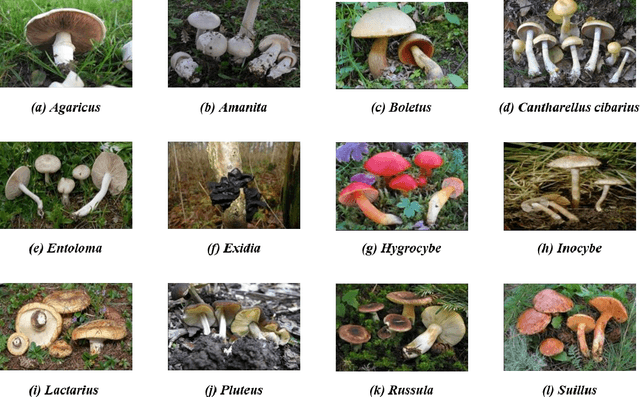
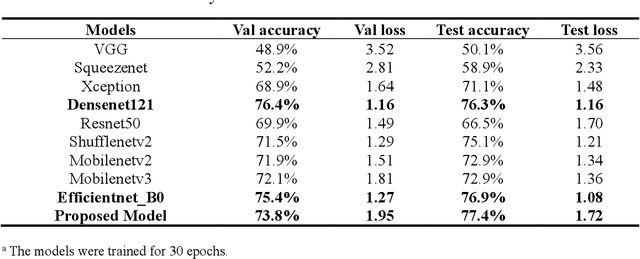
Abstract:The species identification of Macrofungi, i.e. mushrooms, has always been a challenging task. There are still a large number of poisonous mushrooms that have not been found, which poses a risk to people's life. However, the traditional identification method requires a large number of experts with knowledge in the field of taxonomy for manual identification, it is not only inefficient but also consumes a lot of manpower and capital costs. In this paper, we propose a new model based on attention-mechanism, MushroomNet, which applies the lightweight network MobileNetV3 as the backbone model, combined with the attention structure proposed by us, and has achieved excellent performance in the mushroom recognition task. On the public dataset, the test accuracy of the MushroomNet model has reached 83.9%, and on the local dataset, the test accuracy has reached 77.4%. The proposed attention mechanisms well focused attention on the bodies of mushroom image for mixed channel attention and the attention heat maps visualized by Grad-CAM. Further, in this study, genetic distance was added to the mushroom image recognition task, the genetic distance was used as the representation space, and the genetic distance between each pair of mushroom species in the dataset was used as the embedding of the genetic distance representation space, so as to predict the image distance and species. identify. We found that using the MES activation function can predict the genetic distance of mushrooms very well, but the accuracy is lower than that of SoftMax. The proposed MushroomNet was demonstrated it shows great potential for automatic and online mushroom image and the proposed automatic procedure would assist and be a reference to traditional mushroom classification.
Automated airway segmentation by learning graphical structure
Sep 30, 2021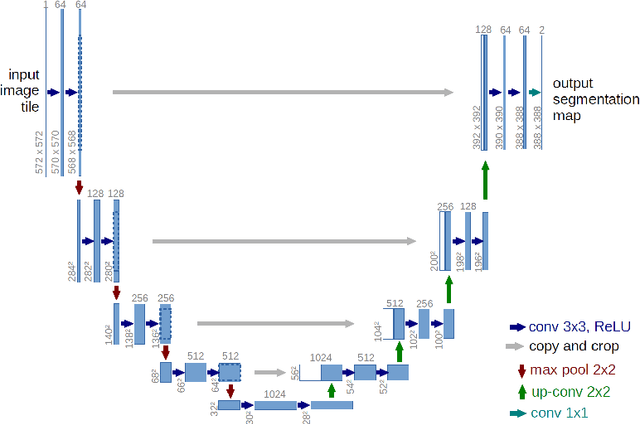

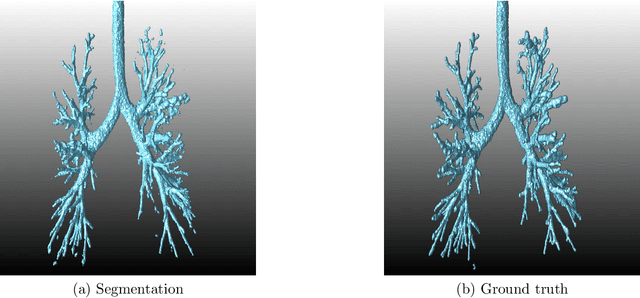
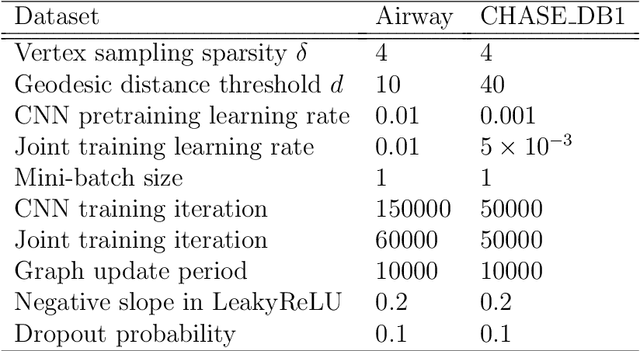
Abstract:In this research project, we put forward an advanced method for airway segmentation based on the existent convolutional neural network (CNN) and graph neural network (GNN). The method is originated from the vessel segmentation, but we ameliorate it and enable the novel model to perform better for datasets from computed tomography (CT) scans. Current methods for airway segmentation are considering the regular grid only. No matter what the detailed model is, including the 3-dimensional CNN or 2-dimensional CNN in three directions, the overall graph structures are not taken into consideration. In our model, with the neighbourhoods of airway taken into account, the graph structure is incorporated and the segmentation of airways are improved compared with the traditional CNN methods. We perform experiments on the chest CT scans, where the ground truth segmentation labels are produced manually. The proposed model shows that compared with the CNN-only method, the combination of CNN and GNN has a better performance in that the bronchi in the chest CT scans can be detected in most cases. In addition, the model we propose has a wide extension since the architecture is also utilitarian in fulfilling similar aims in other datasets. Hence, the state-of-the-art model is of great significance and highly applicable in our daily lives. Keywords: Airway segmentation, Convolutional neural network, Graph neural network
 Add to Chrome
Add to Chrome Add to Firefox
Add to Firefox Add to Edge
Add to Edge